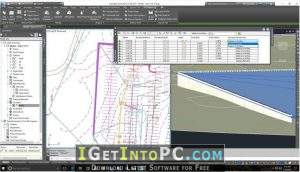

Experience with AutoCAD(R) or AutoCAD-based products (such as Autodesk(R) Land Desktop) and a sound understanding and knowledge of civil engineering terminology. The practices and files included with this guide might not be compatible with prior versions. Prerequisites Access to the 2019 version of the software. Use plan production tools to create plan and profile sheets. Perform quantity takeoff and volume calculations. Create gravity fed and pressure pipe networks. Create assemblies, corridors, and intersections. Create sites, profiles, and cross-sections. AutoCAD Civil 3D software is a leading civil engineering design program for Windows PC, provides project teams with more comprehensive surveying, design, analysis, and documentation solution that enables them to complete land development, transportation, and environmental projects faster and with improved accuracy. Create, edit, view, and analyze surfaces. Create points and point groups and work with survey figures. Create and edit parcels and print parcel reports.

Topics Covered Learn the AutoCAD Civil 3D user interface. You will learn techniques enabling you to organize project data, work with points, create and analyze surfaces, model road corridors, create parcel layouts, perform grading and volume calculation tasks, and layout pipe networks. The AutoCAD Civil 3D software permits the rapid development of alternatives through its model-based design tools. The AutoCAD(R) Civil 3D(R) 2019: Fundamentals learning guide is designed for Civil Engineers and Surveyors who want to take advantage of the AutoCAD(R) Civil 3D(R) software's interactive, dynamic design functionality.


 0 kommentar(er)
0 kommentar(er)
